There are days when I want to walk so far that the mind is consumed by everything and nothing. Just the pleasures of walking down pavements, noticing life as it has become. A still painting.
Because we live in a post-industrial waterfront town of which we know nothing beyond traipsing around the picturesque park we are used to, one of these days when the skies are thick with swollen clouds, I walk to the other end of town which spills onto the tidal channel of the Kill Van Kull (Dutch for “channel from the pass”). Our waterway link with Staten Island and New York.
The road to Kill Van Kull is long, spanning quite a number of blocks, but the walk is not tedious. The pavements might not be lined with examples of flamboyant architecture, but a medley of styles, so that the mind is constantly engaged in noting the variety of architectural details thrown up along the way.
First, the unexpectedly attractive facade of the high school. Gothic Renaissance. Improved upon by the presence of trees bursting with magnolias.
Then, pretty row houses, community buildings worse for the wear, humdrum box buildings (the infamous Bayonne Boxes built in the wake of WWII — the architects who conceived them must have fallen asleep halfway through, bored by the results of their own efforts), part-brick part-clapboard houses, Victorian facades, skinny houses. Wrought-iron balconies, front porches, fire escapes climbing down big somber houses. Sandwiched in between these is a tall building complex from the ’70s, stacked one upon the other. Little boxes bring little joy to the eye.
However, as I near my destination, the houses begin to transform in character. These are surprisingly pleasing to the eye. Sprawling Mock Tudor houses, big clapboard houses that look like they must have been built when Bayonne started to get its first clutch of residents, elegant redstone houses with manicured lawns, wrought-iron garden chairs and tables, one of the houses with decorated carving and a small signage above the entryway stating that it was built in 1887… did anyone even live here in 1887, I think to myself.
Turns out the first person to set eyes upon the shores of Bayonne was a Florentine named Jean de Verrazzano, as early as the 1500s. An explorer in the service of Francis I, King of France, Verrazzano had sailed into New York harbour at the time. They named the bridge connecting Staten Island with Brooklyn after the worthy Italian.
A journal entry from Henry Hudson, sometime in 1609, describes shores he came upon during his sailings upon the Hudson. He wrote about the shores, that they were “pleasant with Grasse, and Flowers, and goodly Trees”. “Sweet smells came from them.” He was referring to Kill Van Kull, which I am bound for. It is also where his party was attacked by a group of Native Americans.
A network of roads wind above me, part of the highway that leads to New York City, and as I continue walking, the scene starts veering towards industrial. A 19th century brass foundry, which once supplied brass parts to the U.S. Navy during WWI, now converted to house a dollar store. A stretch of railroad tracks, probably disused. Geese droppings on the tracks. Old factories and warehouses in tatters. Large white tanks. And an atmosphere of haunting desolation typical to industrial quarters.
The wind has turned sharp as I sight the behemoth arch of the Bayonne Bridge spanning the Kill Van Kull and dominating the skyline. These very paths I roam was once covered in dense forests. Wild animals had the run of the place. Bears and panthers, wild cats and wolves, beavers, red deer, rattlesnakes, squirrels, and foxes. The only human presence here would have been of the Sanrikan Indians, of the Delaware tribe. When there would have been no bridge, no park, no houses, but just a small village. What would the Native Americans have thought of this transformation of their place? Who knows. They have long gone and what remains is this land. With a whole lot of houses stretching along the blocks, a couple of them formerly home to author George R.R. Martin. Them, a strip of a park, the bridge, Staten Island across the waters. And a gaggle of wild geese roaming about the greens, clucking and complaining. You are in the way.
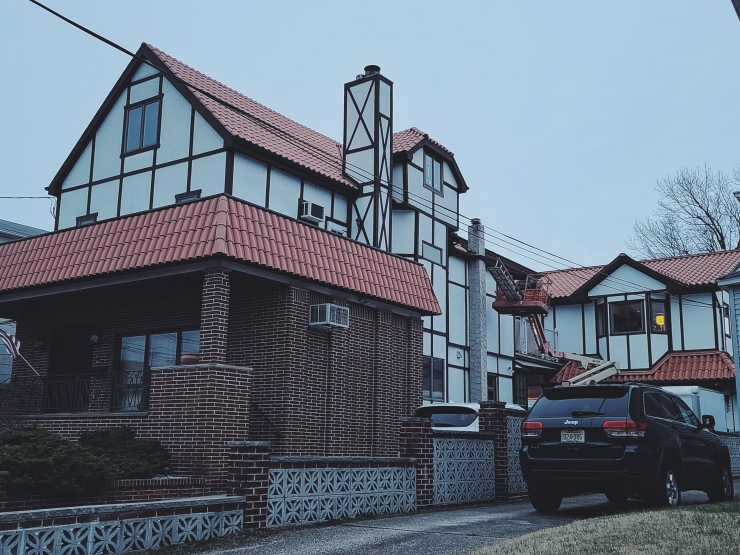
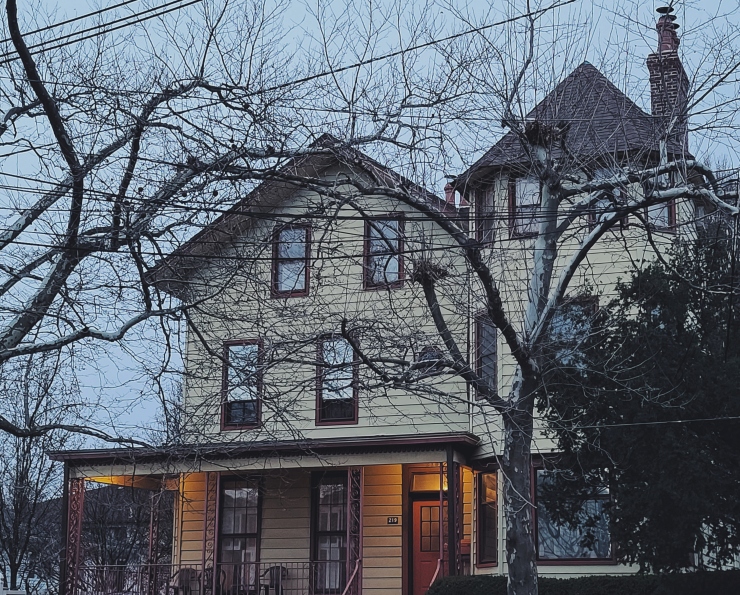
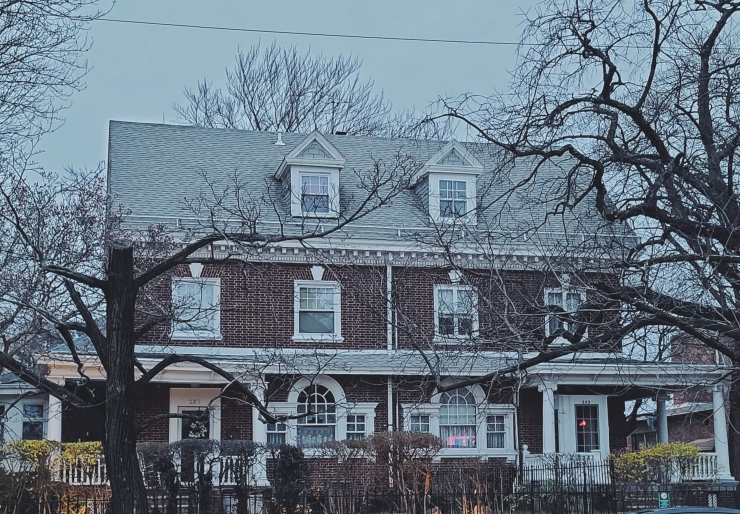
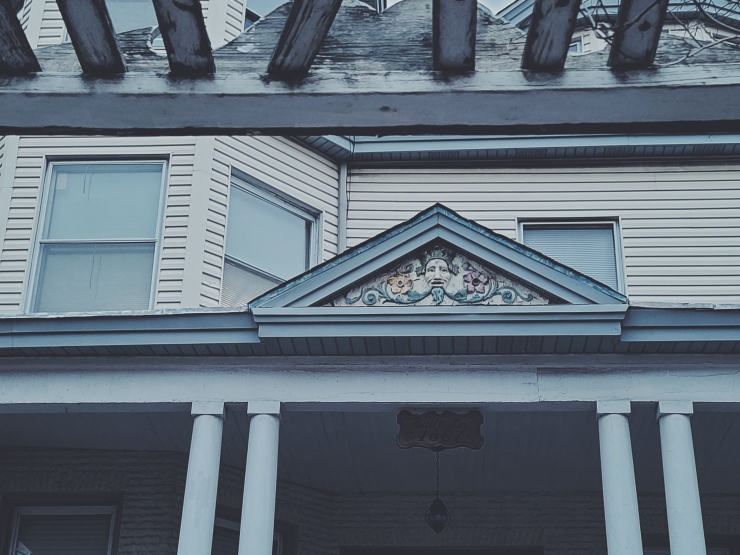
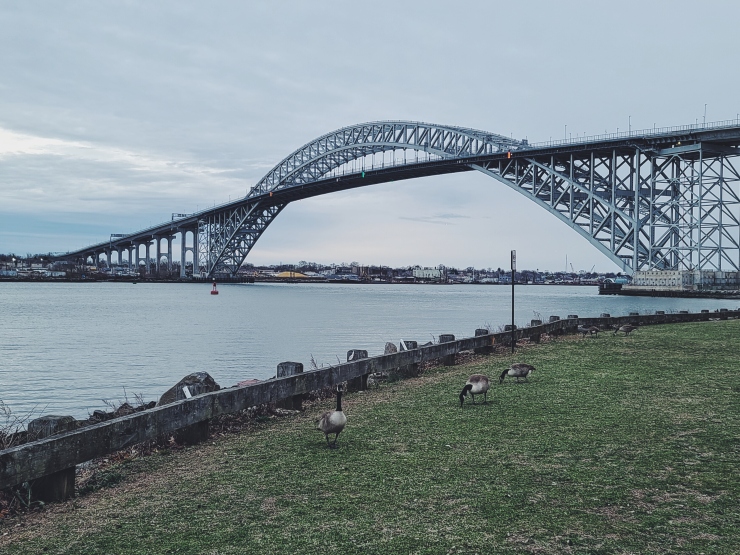
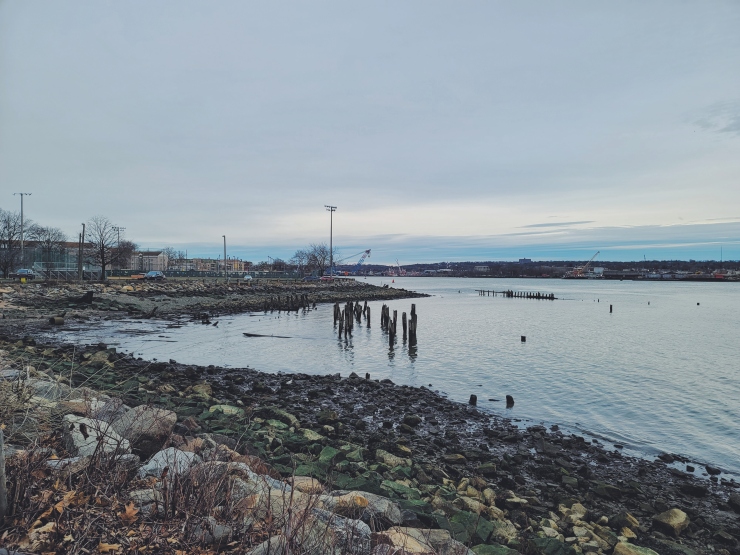
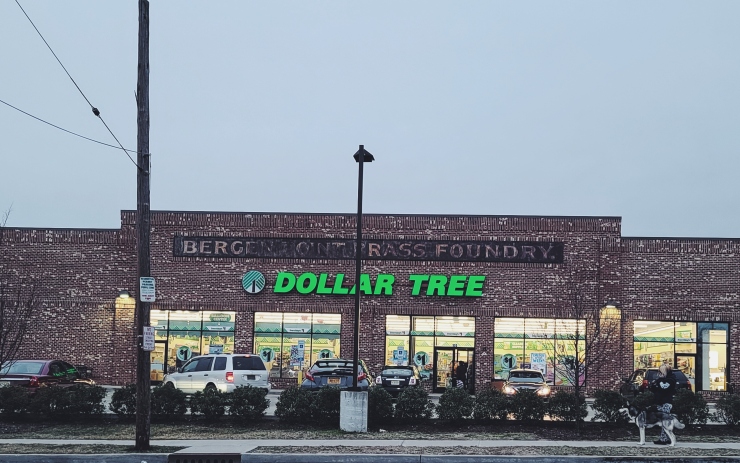


I enjoyed our wander around Bayonne. You paint such an interesting picture. I could even feel that biting wind.
LikeLiked by 1 person
Thank you lovely S. Bayonne is okay even with its gritty bits. You learn to love your surroundings. 🙂 xx
LikeLiked by 1 person
Learn to love and appreciate, particularly now.
LikeLiked by 1 person
Fascinating to see a re purposed building such as as The Berganmont(?) Brass Foundry turned into a Dollar Tree and another factory building left in its inevitable decay. Loved reading about Kill Van Kull and seeing the wonderful old houses. I felt like I was taking the walk along side you – 6 feet away of course! – Neek
LikeLiked by 1 person
Hehe! SD in place, the idea of having you alongside works, Neek. I have the feeling we would enjoy ambling together.
It is the Bergen Point Brass Foundry. It is not the most scintillating of walks, Neek, but you have got to find joy in everything around you. Or so I think. Plus I did enjoy the surprises all along the way. Cheers for coming along milady. x
LikeLiked by 1 person
Ah, it was Bergen Point! That sounds quite nice. Your walk was definitely an improvement over mine which consists of parking lots and concrete sidewalks. No beaches or parks as they are closed here. Yes, I agree there are still joys all around us and I’m grateful that my family is okay and hope that you are also. Take care – Neek
LikeLiked by 1 person
I could not agree more with you on that! Love and hugs. xx
LikeLiked by 1 person
Hey Neek, just a note to say that I think my comments are being banished to spam by WP! I left one on your latest post and I think it has suffered a similar fate. 😦
LikeLiked by 1 person
Thanks for the comment! I really haven’t seen any notice of it but I do appreciate it very much. Why would it be considered spam? I’ve never had this with your comments at all. Very curious! – Neek
LikeLiked by 1 person
I think I have been absconding for some time, maybe that’s why WP has me down as spammy? Who knows. I am going around spying on WP’s conspiracies against me. x
LikeLiked by 1 person
Yes, I’ve noticed that my likes on your posts have been deleted and I keep trying to be a follower for your site and it keeps kicking me out. I really don’t know what is going on. Is there anyone you could contact at WP about this? – Neek
LikeLike
Oh the likes vanished are another story. To make it clear why it happened – I moved my blog back to WP and as a result all of the numbers and likes have vanished. Could not do anything about it. But I am annoyed to hear that you are not being allowed to follow me! 😦 Do you see me on your feed? xx
LikeLiked by 1 person
I did see your last post on my feed but when I click in your site. It says that I’m not following you. Blah!
LikeLiked by 1 person
Now it says I’m following you! Yay! – Neek
LikeLiked by 1 person
Yah! Thank you Neek. 🥰
LikeLiked by 1 person
I sent you an e-invite. Fingers crossed it works.
LikeLiked by 1 person
I did receive it but when I tried to subscribe I got the following message: “There was an error subscribing the user to this blog.” I’m not sure what that means. Sorry-Neek
LikeLiked by 1 person
I am so glad it is sorted. Cheers for sparing the time. Much appreciated. xx
LikeLiked by 1 person
A different walk. Thank you. I like American house style. The way they work with mostly wood and some bircks. Makes for a unique style.
Be good ma’amji
LikeLiked by 1 person
I like shingled houses too apart from clapboard. American architecture is interesting. It borrows and adapts it for its own. I am not a fan of all, but I am a big fan of those massive Southern houses. They look a bit haunted but grand. Thank you for indulging the rambling. Cheers.
LikeLiked by 1 person
Agreed. As in all architecture. Now, the old Southern mansions? Love’em. Just found some old slides from our days in Alabama. Will digitize them and post some day. How’s the situation in NJ? Are going to be in total lockdown like NY?
LikeLiked by 1 person
So far, the numbers are on the rise, but we are not quarantined yet. Cuomo is anti-quarantine. We just go for the customary walks/runs daily and that is all I know of what is happening outside. Scenes from the park.
Would love to see ’em stills from your Alabama days. 🙂
LikeLiked by 1 person
I still wonder how our fate depends – in this modern world – on leaders beliefs… Anti- or pro-? It should not be a matter of political choice, but doing what the doctors say? What happened to the Age of reason?
Will work on the slides…
Phir milenge, ma’amji. Stay away from people as much as you can. For now.
LikeLike
There is something good in every walk, no matter where it is. There are always treasures to find. The walking is the thing, and the ebb and flow of the mind. And I love the sentiment of making the best of everything.
LikeLiked by 1 person
Thank you Tracey. Best to make the most of this odd situation. We are comparatively blessed and yet it is easy to whinge about things. x
LikeLike
An evocative description of your town. We do need to get out and walk occasionally. I used my one permitted daily exercise today to wander through the empty streets of our modern housing estate up to a grass mound known by local kids as the lumpy bumpy. From there, I could look down over the city and reassure myself that the Bristol Channel is still in its place, Somerset is still the other side and the islands of Steepholm and Flatholm have not moved either. All still there for us when we emerge from semi – hibernation.
LikeLiked by 1 person
Absolutely, they are all there when we emerge from this confinement. Imagine how we shall all run around like headless chickens when we get the run of the outside.
Thank you, the park near our place is the biggest and beautiful in town, and so I find from these walks that we are blessed.
The Lumpy Bumpy. 😀 Well at least, we have the option of going out. Silver linings. The thought of absolute confinement strikes me with dread!
LikeLike
What a lovely wander, full of history and a touch of magic! It’s nice to see your posts pop up on my feed again…
LikeLiked by 1 person
Cheers lovely! I hope to swing by yours too. It is so good to be back and be chatting with everyone here. x
LikeLiked by 1 person
Thank you so much! I hope you drop by soon and enjoy a wander through London…
LikeLiked by 1 person
Here I come for a gander through beaut London with you! x
LikeLiked by 1 person
Thank you, sweet reader!
LikeLike